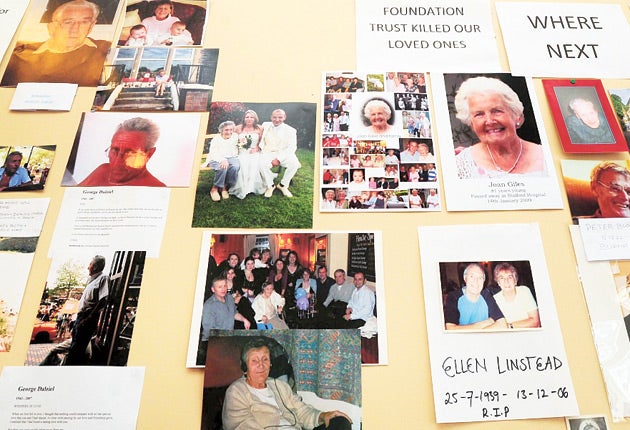Death rates and complaint levels at every hospital to be published
Ministers will use fear of publicity to protect patients from another NHS scandal

Death rates for every hospital in England were published yesterday by the Government for the first time to tighten standards of NHS care.
NHS trusts will be required to report levels of complaints from patients, and health authorities will hold regular "clinical risk summits" to assess threats to patient safety.
The moves, signalling a new level of transparency in the NHS, were announced by the Health Secretary Alan Johnson yesterday in response to the publication of two reports into the scandal at Stafford Hospital in the West Midlands, where an investigation uncovered "appalling" standards of emergency care that may have led to hundreds of deaths but which went undetected for years.
Families described "Third World" conditions at the trust, with some patients drinking water from vases because they were so thirsty and others screaming in pain. The scandal was exposed by the Healthcare Commission in March after monitoring of mortality rates showed the hospital had between 400 and 1,200 more deaths than the national average, during the three years up to 2007-08.
The investigation revealed the hospital was so short of staff that receptionists were assessing patients in the A&E department. Nurses were so poorly trained they did not know how to operate heart monitors. Sir Ian Kennedy, chairman of the commission, described the standards of care as "appalling and chaotic" and said they were the worst he had seen.
Two separate reviews into treatment at the trust, ordered in the wake of the Healthcare Commission investigation and published yesterday, found a key reason why the poor level of care persisted for so long was that patient complaints were ignored.
Dr David Colin-Thome, national clinical director for primary care and the author of one of the reports said: "What has particularly shocked and disappointed me is that no NHS organisations, staff or representatives of the public reported any serious concerns about emergency services in the hospital. Yet patient complaints and patient surveys all pointed to poor care."
Managers, staff and doctors shared responsibility for the scandal which occurred because of an over-reliance on financial and treatment targets rather than on "providing quality services for patients".
The second review by Professor Sir George Alberti, national clinical director for emergency care found that "significant" improvements had been made at the hospital since the investigation and services in Accident and Emergency were now safe. But there were still shortages of nurses, bed occupancy was too high and there was a lack of equipment.
Responding to the reviews, Mr Johnson said agency nurses were being drafted in until permanent staff could be appointed.
From yesterday, death rates for all hospitals will be placed on the NHS Choices website which are "a clinical warning sign that should be investigated properly", the Government said in its response to the reviews.
Death rates had previously been available on the Dr Foster website, a commercial data collection organisation, but in a "not very accessible or user friendly form". Sir Bruce Keogh, the NHS's medical director, is working on more sophisticated measures of safety and effectiveness.
Patient groups and the Tories have called for a full public inquiry.
Subscribe to Independent Premium to bookmark this article
Want to bookmark your favourite articles and stories to read or reference later? Start your Independent Premium subscription today.

Join our commenting forum
Join thought-provoking conversations, follow other Independent readers and see their replies